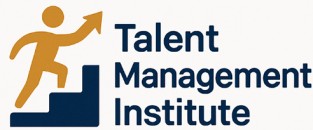
Understanding RFP Recruitment
Decoding the RFP Recruitment Process
Navigating the landscape of RFP (Request for Proposal) recruitment can seem daunting at first glance, yet it's a crucial element in modern talent acquisition strategies. The RFP process plays a pivotal role in sourcing the right candidates for an organization's workforce, ensuring that businesses have access to a diverse talent pool with the aptitude to thrive in dynamic markets. RFP recruitment is essentially about soliciting proposals from recruiting agencies or individual recruiters through a formalized document. This document outlines the scope of work, requirements, and evaluation criteria essential for talent recruitment. In return, agencies submit proposals detailing how they plan to fill the roles, the methodology they will employ, and what differentiates their services in a crowded market. An effective RFP recruitment process not only helps streamline hiring but also presents unique business opportunities for recruitment services to showcase their expertise. By clearly defining the scope of work in the RFP, employers can hone their recruitment marketing strategies and build a strong employer brand. All parties involved gain clarity on expectations and what each will bring to the table. Furthermore, the process involves recruitment advertising and social recruiting efforts to attract top talent. By leveraging social media and applicant tracking systems, companies can widen their reach and better engage potential candidates. The aim is to create a seamless bridge between those seeking employment and those looking for skilled talent. Understanding the intricacies of RFP recruitment is vital, as it connects the dots between proposal solicitation and successful hiring. This process will help recruitment efforts transition into opportunities that enrich the organization’s talent pool. Discover more on how recruitment agencies can significantly impact this process by exploring the importance of recruitment agencies.The Role of RFPs in Talent Acquisition
The Strategic Importance of RFPs in Talent Acquisition
Understanding the role of a Request for Proposal (RFP) in the talent acquisition process is key to leveraging your recruitment strategy. When businesses and recruitment agencies use RFPs effectively, they streamline the selection of talent and ensure that the right candidates are brought into the hiring process. An RFP serves as a formal solicitation document that outlines the scope of work and details specific recruitment needs. It assists employers by providing a structured approach to communicate requirements and expectations. This document becomes a roadmap, guiding the recruitment team and external agencies toward aligning their recruiting efforts with the business's needs. Incorporating RFPs can significantly enhance how recruitment marketing is executed. By clearly defining roles, responsibilities, and scope, it helps streamline recruitment advertising and align efforts with the employer brand. This synergy ensures a consistent message across all channels, including social recruiting platforms like social media. Moreover, using RFPs can help evaluate the quality of proposals from recruitment agencies. Evaluation criteria embedded within the RFP process allow businesses to measure proposals against a standardized benchmark. As a result, companies can efficiently select partners offering the best services and strategies, ensuring the talent pool is filled with suitable candidates. Engaging RFPs in the sourcing strategy can open up new business opportunities. By formalizing the recruitment process, businesses can expand their reach and attract diverse candidates. With an increased emphasis on transparency and compliance, an RFP can influence the privacy policy and ensure all recruitment activities adhere to regulatory standards. Ultimately, the strategic inclusion of RFPs in talent acquisition within the ever-evolving industry landscape will help organizations stay competitive and proactive in identifying and securing qualified candidates. To further understand how these methods integrate with broader marketing initiatives, we recommend exploring effective strategies for inorganic growth in marketing.Challenges in RFP Recruitment
Overcoming the Hurdles in RFP Recruitment
RFP recruitment is a vital component of talent acquisition, yet it comes with its own set of challenges. Navigating these complexities requires a deep understanding of the RFP process and the ability to adapt to various business environments.
One of the primary challenges is the sheer volume of proposals that need to be managed. Each proposal must be meticulously crafted to align with the specific requirements outlined in the solicitation document. This often involves a significant amount of time and resources, which can strain recruitment teams.
Another hurdle is maintaining a consistent employer brand across all proposals. In the competitive landscape of talent acquisition, it's crucial to present a unified and appealing image to potential candidates. This involves integrating recruitment marketing strategies and leveraging social media to enhance visibility.
The scope of work outlined in an RFP can also present difficulties. It requires a clear understanding of the services needed and the ability to articulate how your agency can meet those needs. This is where a well-defined scope work will help in crafting a compelling proposal that stands out.
Moreover, the evaluation criteria set by the hiring agency can vary significantly, making it challenging to tailor proposals effectively. Understanding these criteria is essential to ensure that your proposal aligns with the expectations and increases the chances of success.
Finally, the integration of technological tools such as applicant tracking systems and social recruiting platforms can streamline the RFP recruitment process. These tools can help manage the vast amount of data involved and improve the efficiency of recruiting efforts.
Best Practices for Effective RFP Recruitment
Optimizing Your RFP Recruitment Strategy
In the realm of talent management, mastering the RFP recruitment process is crucial for securing top talent and enhancing your employer brand. To navigate this effectively, consider these best practices that can help streamline your efforts and improve outcomes.
- Define Clear Objectives: Before diving into the RFP process, ensure that your recruitment goals are well-defined. This includes understanding the scope of work and the specific roles you need to fill. A clear objective will help in crafting a precise solicitation document that attracts the right proposals.
- Engage in Recruitment Marketing: Leverage recruitment advertising and social media to broaden your talent pool. By promoting your RFP through these channels, you can reach a wider audience and increase business opportunities.
- Collaborate with Agencies: Partnering with a recruitment agency can provide valuable insights and resources. Agencies often have access to a vast network of candidates and can assist in the RFP process by helping to evaluate proposals and manage the hiring process.
- Utilize Technological Tools: Implementing applicant tracking systems and other technological tools can streamline the RFP process. These tools help in managing proposals, tracking candidate progress, and ensuring compliance with your privacy policy.
- Establish Evaluation Criteria: Develop clear criteria for evaluating RFP responses. This includes assessing the quality of proposals, the experience of the recruiting agency, and the potential for long-term talent acquisition.
- Focus on Employer Branding: Your employer brand plays a significant role in attracting quality proposals. Highlight your company’s values, culture, and opportunities for growth to make your RFP more appealing to potential partners.
By implementing these best practices, you can enhance your RFP recruitment strategy, ensuring that you not only attract but also retain the best talent for your organization. Remember, the RFP process is not just about filling positions; it's about building a robust talent pipeline that aligns with your business objectives.
Technological Tools in RFP Recruitment
Leveraging Technology for RFP Recruitment Success
Incorporating technological tools within the recruitment landscape holds tremendous potential, especially when navigating the RFP process. These advancements streamline the proposal development, applicant tracking, and recruitment marketing efforts, thereby enhancing the overall talent acquisition strategy. To grasp the benefits of technology in RFP recruitment, consider these points:- Applicant Tracking Systems: Utilizing advanced applicant tracking systems (ATS) helps manage the vast pool of applicants efficiently. These systems are crucial for maintaining detailed records of submissions, tracking candidates through each stage of the recruitment process, and implementing evaluation criteria for selections. This ensures a more organized and effective hiring workflow.
- Social Recruiting Platforms: Embracing social media for recruitment advertising plays a pivotal role in engaging a broader talent pool. These platforms are not only cost-effective but also enhance the employer brand visibility, attracting potential candidates who actively seek employment opportunities. Social recruiting can expand the reach, thereby increasing the chances to fill positions with top talent.
- Recruitment Marketing Automation: Automating recruitment marketing can significantly optimize time and resources. These tools enable agencies to craft and distribute consistent messaging across various channels, thus improving the response rate for proposals and streamlining the solicitation document preparation.
- Privacy Policy Management: With increasing concerns about data security, privacy policy management tools play a critical role. They ensure compliance with legal standards and safeguard candidates’ information throughout the RFP process, which is vital for maintaining trust.
- Advanced Analytics: Leveraging data analytics can provide insight into recruitment marketing performance and highlight business opportunities within different scopes of work. By analyzing these metrics, agencies can effectively adjust their strategies to improve outcomes and optimize their RFP submissions.













